How Much Hair Fall Is Normal?
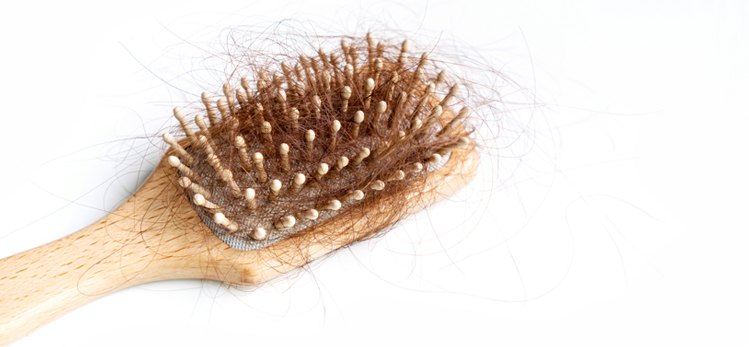
Noticing hair on the pillow after waking up can be a distressing feeling. However, not all hair fall is alarming. Hair fall is a natural process of a healthy body. Losing some hair is natural and not something to worry about. However, if you are losing hair consistently for a longer duration, or losing more than normal hair in chunks leaving behind bald spots, it could be a sign of stress or an underlying medical condition, etc. But how does one know if the hair fall is normal or a sign of concern? Here are some ways to know how much hair fall is normal and when you can be alarmed.
How Much Hair Fall Is Normal?
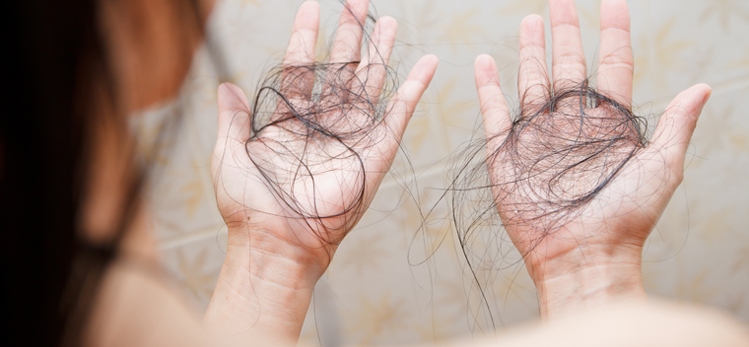
According to the American Academy of Dermatology Association, losing about 50 to 100 hairs a day is normal. In medical terms, this refers to shedding. While people with shorter hair may shed the same amount, the hair fall may be less visible than those with longer hair length.
If you have excessive hair fall, where you notice hair coming out in clumps, this can be referred to as excessive shedding, known as telogen effluvium. This is temporary and the hair will grow back in time. On the other hand, hair loss is when the hair stops growing. Hair loss can be diagnosed only by your doctor, and usually, there is a genetic factor to this type of hair loss.
Causes Of HairFall
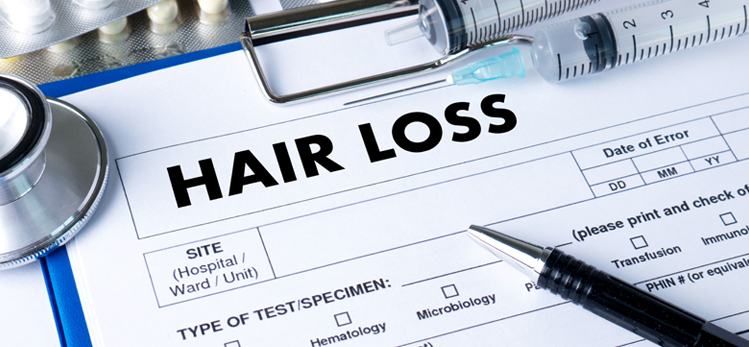
Hairfall can be categorized as either hair shedding or hair loss. The causative agents to both types of hair fall are different. In case of excessive hair shedding, the doctor may diagnose you with telogen effluvium. This condition can be triggered by various factors like giving birth, excessive emotional stress, high fever, surgical trauma, chemotherapy, certain drugs, sudden starvation, etc.
On the other hand, hair loss can also be triggered due to many other factors. Depending on the cause, dermatologists will be able to identify the type of hair loss you suffer from, be it thinning hair, abrupt hair fall, or patterned hair loss leading to baldness. The causative factors can be:
1. Hereditary hair loss: This leads to thinning of hair or widening center part type of hair loss
2. Age: With age, hair follicles tend to stop growing hair and eventually lead to thinner hair or visible scalp type of hair loss.
3. Androgenetic alopecia A condition where the excessive response to androgens leads to hair fall in patients. Also known as female pattern hair loss (FPHL) or male pattern hair loss (MPHL).
4. Alopecia areata: Hair loss is caused due to your immune system attacking the hair follicles in your body. This leads to round bald patches like hair loss in different places of the scalp, or even your nose, ears or your eyelashes, etc.
5. Cancer Treatment Cancer patients may experience this type of hair loss after taking radiation therapy or chemotherapy for the treatment of cancer. This leads to losing most of your hair and, in some cases, all of it.
6. Hair pulling due to hairstyles: This is also known as traction alopecia, where hair falls out due to consistently tight hairstyles or tightly pulled back ponytails etc.
7. Damage due to haircare: If you constantly perm, straighten or color your hair, it can also cause damage to your hair follicles and lead to hair fall.
8. Thyroid disease: One of the most common symptoms of thyroid disease is hair fall. If you have thyroid disease, your hair may fall out in clumps.
9. Nutritional deficiencies: If you have nutritional deficiencies, like less protein intake, iron, zinc, or biotin deficiencies, it can cause hair fall.
10. Other reasons: Along with these many other reasons could cause hair fall like:
Certain medication side effects
Trichotillomania
Scalp infection
Scalp psoriasis
Hormonal imbalance
Sexually transmitted infection, etc
When To Seek Help
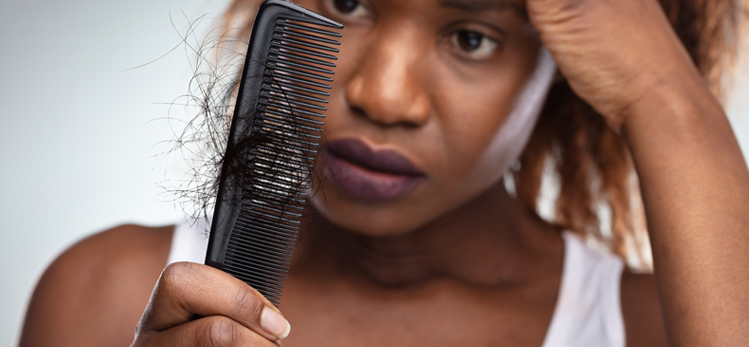
If you are experiencing more than the normal amount of hair fall or are very concerned about your hair fall and it is affecting you psychologically, you must see a dermatologist. If you are also losing hair in clumps or see bald patches, thinning, or receding hairline, you must visit a doctor to get your hair fall diagnosed correctly.
If you suspect your hair fall to be male pattern baldness, you can use the Norwood-Hamilton scale to determine the extent of this condition. In the case of female pattern baldness, the Ludwig scale can help you better understand and diagnose the severity of your hair fall.
The dermatologist will need your complete recent medical history, and he might perform a blood test, pull test, or light microscopy to better assess and diagnose the cause of your hair fall.
Treatment For Hair Fall
Depending on the cause of your hair fall, a dermatologist may advise you of a suitable treatment for your hair shedding. Some treatments can be simple at-home remedies like improving diet or better hair care, and some may need medical treatment and care. Here are some common treatments for hair fall
1. Minoxidil: Minoxidil is a prescribed medication for hair growth in patients with Androgenetic alopecia. 2% or 5% minoxidil solution can be applied topically for better hair regrowth.
2. At-home laser therapy Laser devices like caps or combs are being used to control hair fall and help people with hereditary hair loss to grow thicker hair, although the therapy seems promising, not a lot of research has been done on it yet.
3. Microneedling This treatment involves using microneedles on your scalp to promote hair growth and reduce hair fall.
4. Laser Therapy Another very popular treatment option is Low-Level Laser Therapy (LLLT). Your doctor can prescribe it in combination with other treatments like minoxidil etc.
5. Hair transplant A treatment option for those with permanent hair loss, this can reduce receding hairline and bald spots as a permanent solution.
6. Platelet-rich plasma (PRP) therapy: This therapy is done by injecting the plasma from your blood into the scalp. This is known to improve hair growth in patients with alopecia and reduce hair fall considerably.
7. Medications like Finasteride, Spironolactone, etc.: Depending on the type and cause of your hair loss, the doctor may prescribe medications like finasteride, etc., for treating hair fall.
8. Dietary supplements: Supplements like zinc, protein, biotin and other vitamins and minerals may be prescribed as a treatment for hair fall caused due to dietary deficiencies.
9. Other Haircare tips: Depending on your diagnosis, your doctor may prescribe you some hair care tips like a change of shampoos, change of tight hairstyles, limited use of heat styling, healthy diet, restriction on smoking, etc.
Conclusion
Losing hair can be stressful; one of the less talked about effects of excessive hair fall is the psychological effect and low self-esteem it can bring about in patients. It is advisable to seek help if you are unable to deal with hair fall on your own.
With proper care and diagnosis, hair fall can be treated. Even with those diagnosed with severe hair loss conditions, hair fall can be reduced, and permanent baldness can be avoided with proper treatment. We recommend you seek medical advice when hair fall is extensive and prevent hair loss from worsening.
Myth Busters HairFall
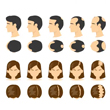
Androgenetic Alopecia - Everything You Need To Know
Have you been experiencing excessive hair fall over a prolonged period of time? It could be an early sign of androgenetic alopecia. It is a hair loss disorder common in both genders and can lead to progressive thinning and even baldness in some patients if not caught and treated early.

How To Make Hair Grow Faster For Men
A head full of healthy hair is a matter of confidence. Hair has its own mechanism of growing and shedding, and it is when this mechanism is thrown off that growth is hindered. Especially in the case of males, hair growth faces a lot of hiccups that can easily be managed.
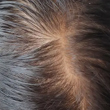
Female Pattern Baldness - Causes & Treatments
Have you suddenly noticed an increase in the number of hair strands on your pillow in the morning? Or is your ponytail getting thinner by day? Well, you might be suffering from female pattern baldness. While that does sound scary, identifying it early on is key to treating this condition effectively. So keep reading to know what this is, how you can identify it, and most importantly, what treatments you can avail of to get your beautiful lustrous hair back.
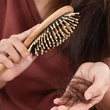
What Are The Reasons For Hairfall?
Almost everyone experiences some amount of hair thinning over the years. Shedding around 50 to 100 single strands of hair per day is considered normal. However, losing more than 150 strands a day, experiencing sudden thinning, or developing circular bald patches on your scalp are reasons for concern. Hair loss occurs when new hair doesn’t grow fast enough to replace the amount of hair you lose daily. Hair can fall due to various reasons, with hereditary hair loss and poor nutrition being the most common hair fall reasons.

Expert Approved Tips For Hair Growth
What can be more debilitating than seeing hundreds of hair strands shedding from your scalp every time you brush your hair? Also, excessive molting occurs during seasonal changes that can be very stressful for you. Although it’s okay to lose between 50-100 strands every day, according to the American Academy of Dermatology, the problem occurs when you start shedding more than normal. But that doesn’t mean you have to feel helpless as there are ways to grow your hair back. Even if you are coping with baldness or alopecia, certain hair growth tips from dermatologists can come to your rescue. Read on to discover how these tips can be your savior when abnormal hair fall problems are in sight.
Trending Videos
+ 8 Sources
LMRC - GGI-CO-A2-DMA-300026127-300026127-WM-J21-282
© 2021 Dr. Reddy’s Laboratories Ltd. All rights reserved.